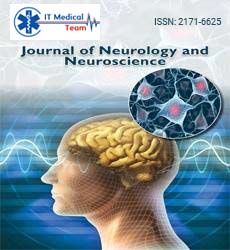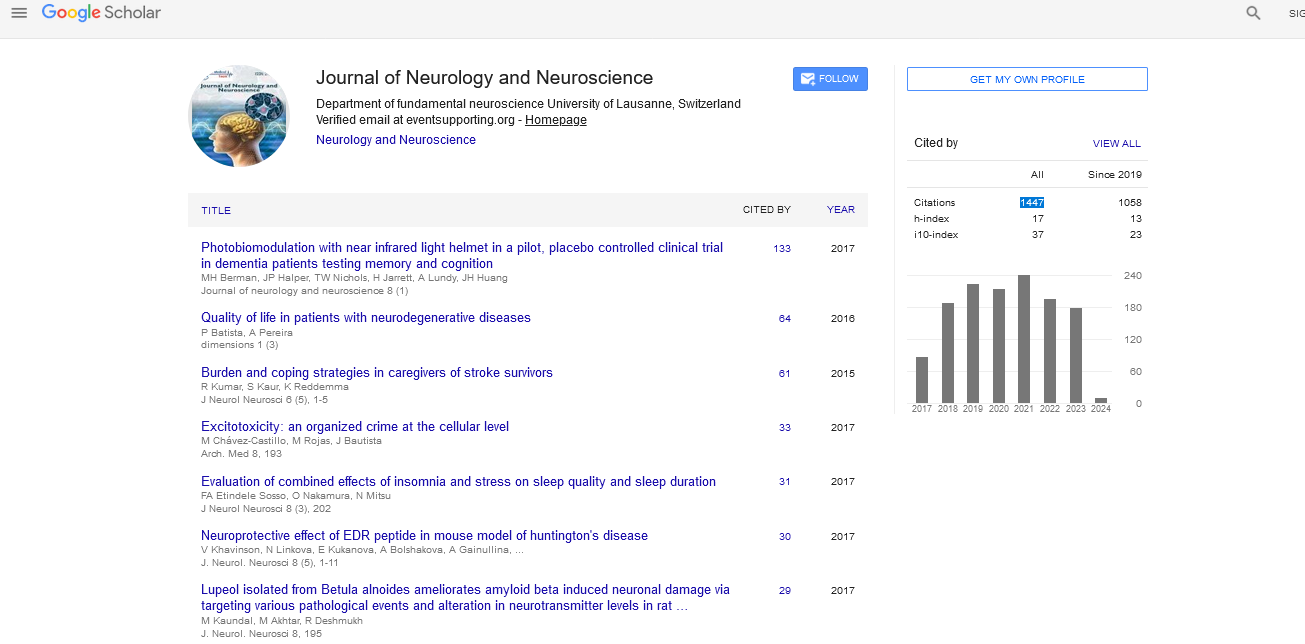Perspective - (2025) Volume 16, Issue 3
The Role of KRIT1, CCM2, and PDCD10 Genes in Cavernous Malformation Pathogenesis
Texica Halion*
Department of Neurosciences & Psychiatry, University of Toledo College of Medicine and Life Sciences, Toledo, USA
*Correspondence:
Texica Halion, Department of Neurosciences & Psychiatry, University of Toledo College of Medicine and Life Sciences,
USA,
Email:
Received: 27-May-2025, Manuscript No. ipjnn-25-15716;
Editor assigned: 29-May-2025, Pre QC No. P-15716;
Reviewed: 12-Jun-2025, QC No. Q-15716;
Revised: 17-Jun-2025, Manuscript No. R-15716;
Published:
24-Jun-2025
Introduction
KRIT1 (also known as CCM1), CCM2 (malcavernin), and PDCD10 (CCM3) are three critical tumor suppressor genes whose loss-of-function mutations—whether inherited or arising via somatic “second hits”—drive the formation and progression of Cerebral Cavernous Malformations (CCMs), vascular lesions characterized by abnormally dilated, leaky capillary channels lacking intervening brain tissue. All three genes encode adaptor proteins expressed in central nervous system endothelial cells, astrocytes, neurons, and perivascular neurovascular unit components, and they function together as a trimeric “CCM Signaling Complex” (CSC), organizing critical pathways that maintain vascular integrity. KRIT1, the earliest discovered of the trio, binds the small GTPase Rap1 via its FERM domain and interacts with ICAP1α and β1 integrin to stabilize adherens junctions and endothelial barrier function. Loss of KRIT1 disrupts cell–cell junctions, alters endothelial polarity, and causes increased RhoA–ROCK activity, leading to actin stress fiber formation, increased permeability, and vascular leak—phenotypes that are reproducible in both heterozygous human cells and Krit1 knockout zebrafish or mice, and which can be rescued pharmacologically by ROCK inhibition. CCM2, which contains a Phosphotyrosine Binding (PTB) domain, binds directly to KRIT1 and to signaling molecules in the Rac–MEKK3–MKK3–p38 MAPK pathway; it functions as a molecular scaffold that regulates osmotic and inflammatory stress signaling. Loss of CCM2 mimics KRIT1 deficiency, unleashing RhoA hyperactivity and endothelial dysfunction, while genetic interaction studies have shown that KRIT1 and CCM2 form a multiprotein complex necessary for junctional localization and vascular stability [1].
Description
PDCD10 interacts with CCM2 via its FAT homology domain and integrates into the CSC, but it also has unique roles outside of the canonical complex. PDCD10 binds GCKIII family kinases (such as STK25/MST3/4) within the STRIPAK complex, regulating Golgi assembly, centrosome positioning, cell migration, and programmed cell death signaling. Loss of PDCD10 causes disassembly of the Golgi, mislocalized kinases, and altered cell migration—features not seen with KRIT1 or CCM2 loss—suggesting that CCM3 regulates additional pathways critical for vascular morphogenesis. Furthermore, individuals with PDCD10 mutations display more aggressive clinical phenotypes—earlier onset, higher lesion burden, and faster hemorrhage risk—compared to those with KRIT1 or CCM2 variants, supporting the concept that CCM3 loss triggers both CSC-dependent and CSC-independent pathogenic pathways [2].
A unifying pathogenic mechanism across KRIT1, CCM2, and PDCD10 loss is dysregulated RhoA–ROCK signaling: all three proteins act to suppress RhoA-mediated actomyosin contractility, and their absence leads to increased phosphorylated myosin light chain, cytoskeletal tension, endothelial barrier breakdown and aberrant angiogenesis. Indeed, in vitro and in vivo models demonstrate that pharmacologic ROCK inhibition reverses endothelial leak and partially rescues CCM phenotypes, highlighting the centrality of RhoA–ROCK dysfunction. Another emerging mechanism is the loss of endothelial autophagy: deletion of KRIT1 in human endothelial cells suppresses autophagy via mTOR–ULK1 activation, resulting in accumulation of p62/SQSTM1, increased cellular stress, and promotion of endothelial-to-mesenchymal transition—a phenotype also observed in CCM2 silenced cells and PDCD10 knockout models—suggesting that defective proteostasis is a conserved contributor to CCM lesion formation. Additional dysregulated pathways include MEKK3–KLF2/4 transcriptional signaling: KRIT1 depletion leads to upregulation of MEKK3–KLF2/4, driving endothelial proliferation and inflammation in tandem with CCM2 loss, and PDCD10 deficiency also triggers similar stress response cascades via its interaction with GCKIII kinases [3,4].
Genetically engineered mouse models provide compelling in vivo evidence for the tumor suppressing roles of these CCM genes: homozygous knockout of Krit1 or Ccm2 leads to mid gestation lethality from cardiovascular defects, and conditional postnatal deletion in endothelial cells produces CCM lesions in the cerebellum and retina that spectrally mirror human pathology. Pdcd10 deletion causes an even more severe phenotype in mice, with earlier lesion formation and vascular instability, consistent with clinical observations in human CCM3 families. Moreover, both human familial and sporadic CCM lesions exhibit evidence of somatic loss of heterozygosity in all three genes, supporting the two hit model whereby both alleles must be inactivated in endothelial cells to trigger lesion formation. Recent clonal analyses also suggest that mutant endothelial cells may recruit adjacent wild-type cells into lesion formation via non-cell-autonomous mechanisms [5].
Conclusion
KRIT1, CCM2, and PDCD10 converge on common molecular consequences dysregulated cytoskeletal dynamics, impaired junctional integrity, inflammatory and stress signaling activation, and defective autophagy—but they also contribute distinct signaling roles, particularly in migration, cellular localization, and vascular development. While loss-of-function mutations in any of the three genes yield virtually indistinguishable histopathologic lesion structure, CCM3/PDCD10 mutations tend to produce a more fulminant phenotype both clinically and experimentally. Understanding the nuanced roles of each protein within and beyond the CSC underpins emerging therapeutic approaches: for instance, ROCK inhibitors may reverse core cytoskeletal defects common to all, whereas targeted mTOR ULK1 modulation may specifically address autophagy deficits, and modulating STRIPAK–GCKIII interactions may correct migration and morphology defects particularly accentuated in PDCD10 loss. Future pharmacologic therapies may thus be fine-tuned based on the specific gene mutated, as well as shared downstream pathways. In conclusion, KRIT1, CCM2, and PDCD10 form a foundational triad of CCM pathogenesis: through coordinated and independent functions they maintain endothelial stability and vascular integrity, and their loss triggers the vessel fragility, permeability, and hemorrhage that characterize cerebral cavernous malformations
Acknowledgment
None.
Conflict of Interest
None.
References
- Stockton RA, Shenkar R, Awad IA, et al. Cerebral cavernous malformations proteins inhibit Rho kinase to stabilize vascular integrity. J Exp Med. 2010;207(4):881-896.
Google Scholar, Cross Ref, Indexed at
- Cullere X, Plovie E, Bennett PM, et al. The cerebral cavernous malformation proteins CCM2L and CCM2 prevent the activation of the MAP kinase MEKK3. Proc Natl Acad Sci. 201;112(46):14284-14289.
Google Scholar, Cross Ref, Indexed at
- Draheim KM, Fisher OS, Boggon TJ, et al. Cerebral cavernous malformation proteins at a glance. Journal of cell science. 2014 Feb 15;127(4):701-7.
Google Scholar, Cross Ref, Indexed at
- Baranoski JF, Kalani MY, Przybylowski CJ, et al. Cerebral cavernous malformations: review of the genetic and protein–protein interactions resulting in disease pathogenesis. Front Surg. 2016;3:60.
Google Scholar, Cross Ref, Indexed at
- Kar S, Samii A, Bertalanffy H. PTEN/PI3K/Akt/VEGF signaling and the cross talk to KRIT1, CCM2, and PDCD10 proteins in cerebral cavernous malformations. Neurosurg Rev. 2015;38(2):229-237.
Google Scholar, Cross Ref, Indexed at





